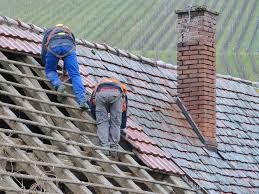How Drone Solutions are Enhancing Public Safety and Emergency Response
In recent years, drone solutions have transformed public safety and emergency response. These innovative technologies assist first responders in critical situations. Drone service providers offer real-time data and aerial views during emergencies.
This capability can improve response times. How can drone technology change the way we handle disasters? As more agencies adopt this technology, the benefits become clear.
Drones can reach areas that are hard to access. They provide vital data quickly and efficiently. We will explore how drone solutions are enhancing safety communities everywhere.
Real-Time Surveillance During Emergencies
Real-time surveillance using drones plays a crucial role during emergencies. When a disaster strikes, time is of the essence. Drones can be quickly deployed to assess the situation from above.
They provide a clear view of areas difficult for ground teams to reach. This aerial perspective helps emergency responders to:
- understand the scale of the disaster
- identify hazards
- locate people in need of help
In situations such as floods, wildfires, or major accidents, drones can capture live video and images. This data is sent back to emergency operations centers. It allows decision-makers to view the unfolding situation in real-time.
Drones are equipped with thermal imaging cameras, which can detect heat signatures. It saves time and improves the safety of responders. Providing vital data helps inform their actions and protects the public.
Drones can cover vast areas quickly and efficiently. It increases the chances of finding those in distress.
Real-time surveillance through drone technology enhances the effectiveness of emergency response efforts. It saves time and improves the safety of responders. Providing vital data helps inform their actions and protects the public.
Search and Rescue Operations: A New Perspective
Search and rescue operations are critical in emergencies where lives may be at stake. Drones like the DJI M350 are revolutionizing how these missions are carried out.
Drones offer a faster and safer by flying over challenging terrains and disaster zones. The DJI M350 features advanced flight technology that allows it to cover large areas. It provides real-time video feeds to rescue teams.
When a person goes missing or is trapped in a dangerous situation, time is crucial. Using the DJI M350, search teams can access remote locations.
This drone is equipped with high-definition cameras and thermal imaging capabilities. It enables it to reveal heat signatures from individuals hidden under foliage or debris. This thermal feature enhances the chances of locating missing persons in scenarios such as:
- forest searches
- collapsed structures
The aerial viewpoint provided by drones enables rescue teams to assess the situation. This technology helps them plan their approach and allocate resources more effectively.
Incorporating drones like the DJI M350 into search and rescue operations will save time. It also enhances safety for responders and those in need.
These modern tools represent a shift in how we respond to emergencies. This change promises improved outcomes for communities everywhere.
Disaster Assessment and Damage Evaluation
After a disaster occurs, a quick and accurate assessment of the situation is essential. Drones play an important role in this process by providing a bird’s-eye view of the affected areas.
This capability allows emergency teams to gather valuable data about the extent of the damage. It does so without putting themselves in danger.
By flying over disaster sites, drones can capture high-resolution images and videos. These visuals help responders see the destruction caused by events such as:
- earthquakes
- hurricanes
- floods
One of the key benefits of using drones for damage evaluation is their speed. Drones can cover large regions in a short amount of time.
They deliver immediate details that can inform rescue efforts and recovery plans. For example, drones can:
- identify blocked roads
- downed power lines
- damaged buildings
They can help determine where to send help first. Drones equipped with advanced technology can create 3D maps of the affected landscapes. This data is useful for assessing structural damage and planning future rebuilding efforts.
Drones provide a picture of the situation. It allows decision-makers to allocate resources more effectively. It ensures the right help reaches those in need.
The use of drones for disaster assessment enhances response capabilities. They also improve damage evaluation for emergency services. It leads to more efficient and effective recovery efforts for communities harmed by disasters.
Delivery of Medical Supplies to Hard-to-Reach Areas
In emergencies, getting medical supplies to people who need them can be a big challenge, especially in remote or hard-to-reach areas. Drones are changing this by making it quicker and easier to deliver these supplies right where they are needed.
Drones can fly over obstacles like floods, landslides, or collapsed buildings. They ensure that vital medical aid reaches its destination faster.
For example, during natural disasters, some areas may lose access to roads and regular transport due to damage. In such cases, drones can carry supplies like:
- first aid kits
- medicine
- food
These drones can be equipped with various payloads and fly from a distribution center to the target area. This method speeds up delivery and maximizes efficiency. It allows more help to reach more people in less time.
Drones can be programmed to deliver supplies in specific quantities so they can drop off what is needed while reducing waste. This capability is crucial for saving lives. It provides quick support during critical moments when time is of the essence.
The use of drones for medical supply delivery is a promising advancement. It complements existing emergency response strategies. It makes it easier to ensure that help gets to those who need it the most.
Crowd Management and Event Safety Monitoring
Crowd management during large events is vital for ensuring the safety of all attendees. Drones are essential tools in this area, helping event organizers monitor crowds effectively.
When a large number of people gather for concerts, festivals, or sporting events, it’s vital to keep track of the crowd’s movement and behavior. Drones can provide a bird’s-eye view, allowing safety teams to monitor crowd formation.
This helps identify areas where people may be getting too close together. Using live video feeds, drones can identify potential hazards, such as:
- blocked exits
- overcrowded sections
This quick response can help prevent dangerous situations before they escalate. Drones equipped with speakers allow officials to communicate messages to large groups.
For instance, in an emergency, such as a severe weather warning, drones can deliver instructions to attendees. It helps ensure that everyone stays informed and safe.
During emergencies, drones can help guide people to safer areas. It reduces panic and ensures a smoother evacuation if needed.
Drones can be used to document the event, providing valuable footage. This footage can be reviewed later for safety assessments and improvements in future events.
The integration of drones in crowd management enhances safety measures. It allows for a more organized and secure environment for everyone involved.
Enhanced Communication for First Responders
Effective communication is a key part of successful emergency response efforts. Drones are being used to improve how first responders share information.
With their ability to provide aerial views and real-time data. Drones help bridge communication gaps that often occur in chaotic environments.
When emergencies arise, communication can break down due to blocked roads. Drones can be deployed to remote areas. They collect valuable information and relay it back to command centers.
It allows decision-makers to see what is happening on the ground even when they cannot be present. For example, if a chemical spill occurs, drones can fly over the area to:
- assess the situation
- monitor risks
- provide live video feeds
The information gathered can highlight safety zones. It allows responders to plan their actions accordingly.
Moreover, some drones come equipped with communication devices like loudspeakers. This feature can be useful during large-scale events or disasters.
First responders can use drones to broadcast important messages to people in affected areas. For instance, they can instruct individuals to evacuate or move to safer locations. It helps keep everyone informed and safe.
Drone technology enhances communication, and first responders can respond more effectively to emergencies. It leads to:
- better coordination among teams
- quicker decisions
- higher chance of saving lives
Firefighting Applications: Aerial Support in Action
Drones are becoming an important tool in firefighting. They provide aerial support that helps teams battle fires more effectively. When a fire breaks out, time is crucial, and drones can quickly fly over the affected area to gather essential data.
This aerial view allows firefighters to see the size of the fire, where it is spreading, and what nearby structures are at risk. With high-definition cameras, drones can capture live video and images. It helps teams make well-informed decisions.
One of the key advantages of using drones in firefighting is their ability to access hard-to-reach areas. Firefighters may not always be able to navigate through thick smoke or rough terrain. Drones can fly above the flames, providing real-time insights into the fire’s behavior.
This data helps them plan their response strategies. It includes locating the best routes to approach the fire and determining where to apply water or fire retardant.
Drones fitted with thermal imaging cameras can detect heat signatures, even through smoke. This feature helps identify hotspots that may not be visible to the naked eye. It enables firefighters to address potential flare-ups before they become larger problems.
The combination of aerial surveillance and thermal imaging improves the efficiency of firefighting efforts. This innovative approach to firefighting saves valuable time. It also improves safety for the firefighters in the field.
This innovative approach to firefighting saves valuable time. It improves safety for the firefighters in the field. As technology advances, the role of drones in combating wildfires is likely to grow. This makes them an essential part of modern firefighting strategies.
Environmental Monitoring and Wildlife Protection
Drones are being used for environmental monitoring. They offer new ways to protect wildlife and keep an eye on nature.
These flying machines can cover large areas quickly. This makes them ideal for surveying:
- forests
- mountains
- rivers
other landscapes
By capturing high-quality images and data, drones help scientists and conservationists track changes in the environment. These include:
- deforestation
- pollution
- the health of various ecosystems
For instance, drones can fly over protected areas to check for illegal activities like poaching or logging. With cameras equipped to spot animals from above, they help monitor wildlife populations without disturbing their natural habitats.
This is crucial for endangered species. It allows researchers to collect valuable data about their numbers and behavior patterns.
Another benefit is that drones can be used to monitor the effects of climate change. They can gather data on how rising temperatures or changing weather patterns impact local wildlife and plant life. This data helps communities make better decisions about conservation efforts.
Drones are capable of helping with habitat restoration efforts. They can assist in planting new trees. They also help in spreading seeds over wide areas, making reforestation projects more efficient.
By utilizing drone technology, we can protect the environment and support the wildlife that depends on it. It will lead to a healthier planet for future generations.
Future Trends: The Evolving Role of Drones in Public Safety
The role of drones in public safety is set to evolve. One of the key trends is the development of a custom drone tailored to specific emergency response needs. These custom drones can carry unique payloads, such as:
- medical supplies
- sensors
- communication devices
This adaptability enhances their effectiveness in various situations. We see an increase in the integration of artificial intelligence (AI) with drone technology.
AI can assist drones in analyzing real-time data. This capability enables them to make decisions based on their surroundings.
Another trend is the expansion of drone networks for coordinated operations. By communicating with each other, fleets of drones can cover larger areas and share data in real time. It could improve the efficiency of:
- search and rescue missions
- disaster assessments
- crowd management at events
Regulatory frameworks surrounding drone use in public safety become more defined. It will offer clearer guidelines for their operation. The future of drones in public safety looks promising.
Learn How Drone Solutions Are Enhancing Public Safety and Emergency Response
Drone solutions are transforming public safety in many ways. Enterprise drone technology is becoming essential for quick emergency responses. These advancements improve our ability to save lives effectively.
Drones enhance communication and deliver crucial supplies faster than before. As we invest in these innovations, we can expect safer communities.
By integrating drone solutions, agencies can improve their efficiency. The future holds great promise for enterprise drone applications in diverse settings.
Did you find this article helpful? If so, check out the rest of our site for more informative content.





